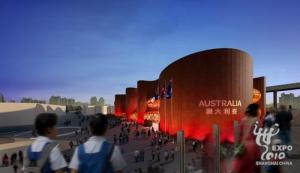One of the interesting juxtapositions around Expo 2010 is its theme of sustainability contrasted to a massive temporary exhibition focused on an intensive 6 months with much of the site to be demolished in October.
The Expo is certainly a success with a projected attendance of 75million visitors. From the sustainability perspective there have been many innovations and initiatives.
Much of the heating and cooling uses heat pumps powered by solar (PVC) cells. Movement across the site has been optimised in three planes, above on, and below ground encouraging walking and most of the transportation is electric powered. Several of the larger buildings are designed for re-use and one incorporates the world’s largest green wall. Another innovation has been refurbishing many of the pre-existing industrial buildings on-site to preserve Shanghai’s heritage.
The Expo is also hosting a string of conference events focusing world experts on its theme of ‘better city, better life’ and sustainability. This was also a key focus of the CIOB events we attended.
Part way through, it’s hard to assess if the Expo will contribute a net benefit to sustainability and ‘better city’ development but from what we saw, it is looking positive.
Before moving onto other topics though, there were many pavilions that really caught our attention. The Chinese and UK pavilions have already been mentioned. The Australian pavilion is a standout design looking like cross between Ayres Rock and a tin shed. The design is very distinctive and ‘Australian’.
Many of the countries used interesting cladding to focus on sustainability and insulation. The Canadian pavilion was covered in lumber, the Portuguese in cork. The ‘paper cut’ effect of the Polish pavilion combined a classic Chinese art from with shading and ventilation.
Overall the experience was fantastic, as long as you don’t mind the crowds, and will be long remembered. Thoughts on sustainability and ‘Zero Carbon’ will follow in later posts.









